Duck rearing in polythene ponds is a game-changer for small-scale farmers. By using a controlled environment, the ducks can thrive and grow at a faster rate. Polythene ponds are easy to maintain, cost-effective, and eco-friendly. Proper management and feeding minimize disease and parasite infestations, reducing veterinary costs. However, there are some challenges to duck rearing in polythene ponds, including water pollution and overcrowding.
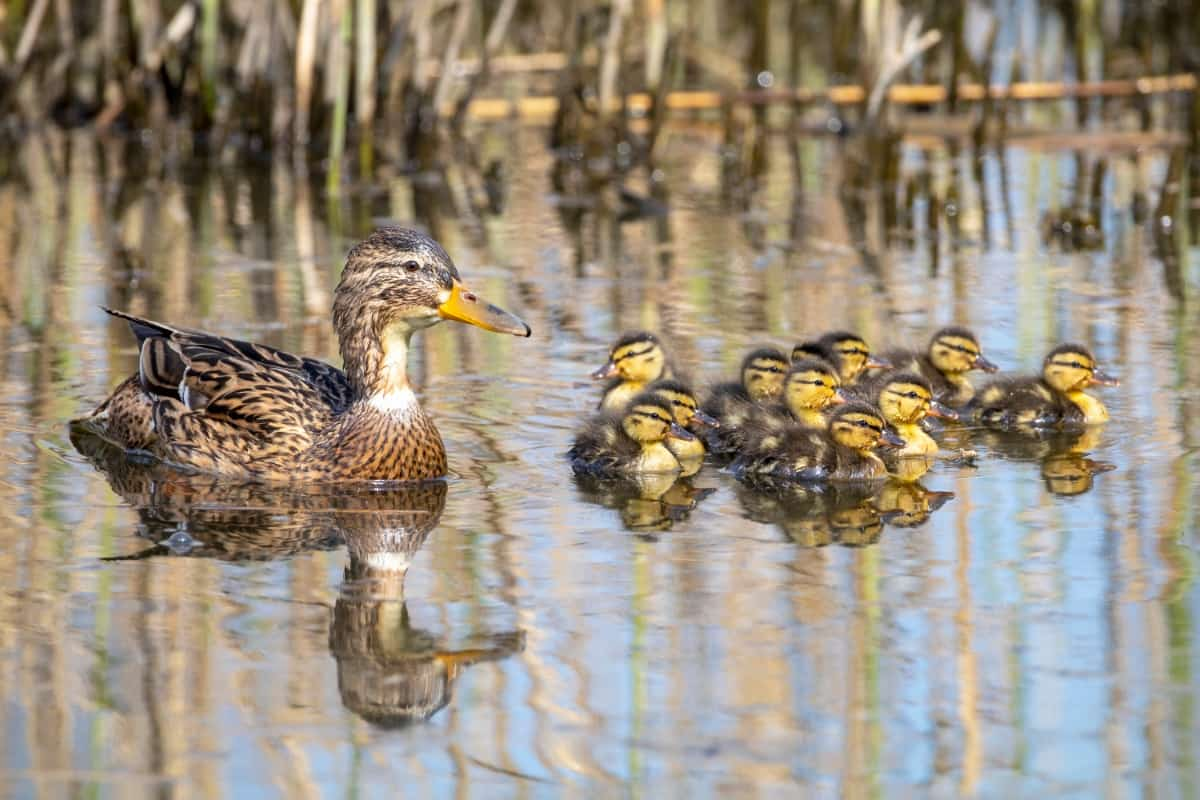
By following the proper techniques for setting up and maintaining the ponds, farmers can overcome these challenges and reap the benefits of sustainable and efficient duck-rearing practices. Polythene ponds are a great way to revolutionize duck rearing for small-scale farmers.
Duck Rearing in Polythene Ponds
Duck Rearing in Polythene PondsWhat is Duck Rearing?
Duck rearing is the process of raising ducks for their meat, eggs, or feathers. It is an important source of income for many small-scale farmers worldwide. Duck rearing can be done in various ways, including free-range or confinement systems. Free-range systems allow ducks to roam and forage freely, while confinement systems keep ducks in a controlled environment. In either case, proper management and feeding are essential to ensure the ducks are healthy and growing steadily.
What is Duck Rearing in Polythene Pond?
Duck rearing in polythene ponds involves raising ducks in a controlled environment created by an artificial pond lined with polythene. This method of duck rearing is becoming increasingly popular among small-scale farmers due to its cost-effectiveness, low risk of disease and parasite infestations, and ease of maintenance. Polythene ponds provide a sustainable and eco-friendly option for farmers who want to produce high-quality ducks without harmful chemicals or antibiotics.
Types of Duck Raising
- Duck rearing can be divided into two main types – extensive and semi-intensive/intensive systems. The extensive system is suitable for landless and poor farmers in India who need the means for housing or feeding systems.
- Ducks in this system are fed near waterways, harvested paddy fields, or other grain fields with Sorghum, Paddy, and non-usable grains for nutrition. Simple and inexpensive enclosures made of bamboo or sticks and leaves are used for housing.
- On the other hand, semi-intensive and intensive systems are used for commercial purposes in India. Under the intensive system, a floor space of 3 square feet per bird is required up to 16 weeks of age.
- Under the semi-intensive system, a floor space of 3 square feet per bird in the night shelter and 10 to 15 square feet per bird in the outside run is recommended up to 16 weeks of age.
- During the brooding period, which lasts 0-4 weeks for Khaki Campbell ducklings and 2-3 weeks for Pekin ducklings, they should be kept warm with appropriate heating sources.
- After that, the ducks can be reared for 15-16 weeks until they reach adult size. It is important to provide ducks with a nutritious diet and clean water and to vaccinate them against diseases such as cholera and plague.
In case you missed it: How to Start Duck Farming from Scratch: A Detailed Guide for Beginners
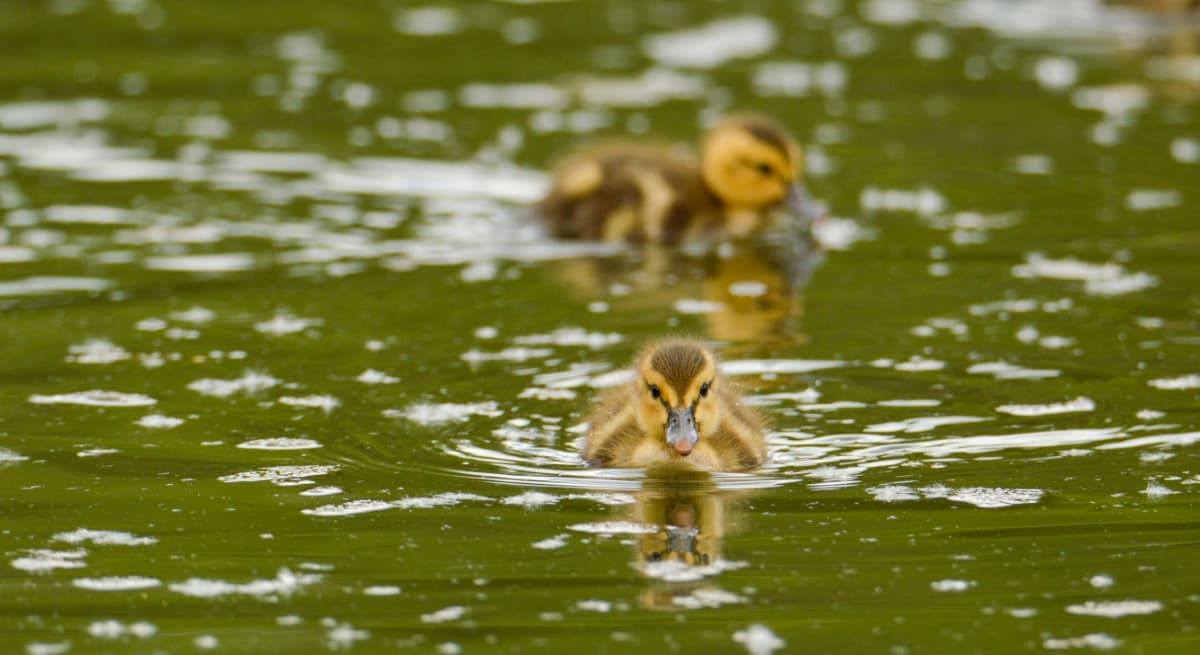
Popular Duck Varieties
- Some popular duck breeds for rearing in a polythene pond are Khaki Campbell, Pekin, and Muscovy.
- Khaki Campbell ducks are popular for egg production as they lay many eggs yearly. They have a small body size and are good foragers, making them suitable for rearing in small ponds.
- Pekin ducks are another popular breed that is commonly used for meat production. They have a large body size and grow quickly, making them suitable for commercial duck farming. They also have a docile temperament, which makes them easy to handle.
- Muscovy ducks are known for their unique appearance and excellent meat quality. They have a lean body and a distinctive red caruncle on their head. Muscovy ducks are also good foragers and can adapt well to different environments.
- Other duck breeds that can be reared in a polythene pond include Indian Runner, Rouen, and Cayuga.
Benefits of Using Polythene Ponds for Duck Rearing
- Faster growth rate: Hybrid ducks can reach up to 3 kg in just 50 days.
- High-quality meat: Duck meat is dark, uniform, and delicious.
- Increased egg production: Ducks lay more yearly eggs per bird than chickens.
- Larger and more nutritious eggs: Duck eggs are bigger and contain more nutrients than chicken eggs.
- Versatile byproducts: Duck feathers can be used to make high-quality bedding materials.
- Hardy and disease-resistant: Ducks are resilient and can resist many diseases.
- Natural pest control: Ducks can help control pests like grasshoppers, snails, and mosquitoes.
- Suited for integrated farming: Ducks can be combined with other farming systems, such as fish or paddy farming. Farmers can optimize the benefits of raising ducks and make their operations more efficient and sustainable using polyethylene ponds for duck rearing.
In case you missed it: Integrated Fish Duck Farming, Duck Dropping as Manure
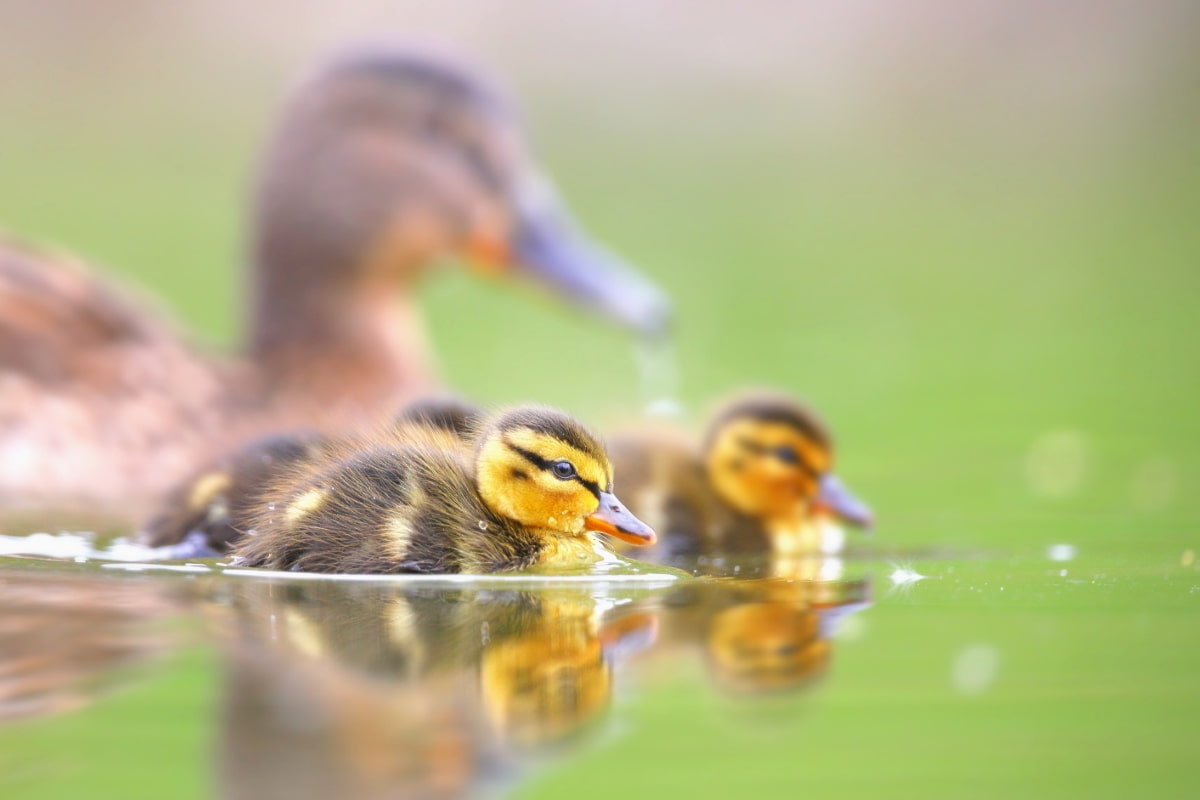
Steps to Start Polythene Pond Duck Rearing
- Build a rectangle-shaped pit: Dig a pit measuring 64 feet (rectangle) or 55 feet (square) with a depth of 2 feet using an implement like a spade. Also, construct a duck house measuring 10 x 8 feet.
- Spread Polythene Sheet: Use a polythene sheet of 7-8 feet in width and line the inner sides of the pit completely. Use heavy objects like stones to fix the polythene sheet in position. Fill the pond with water into the polythene sheet. Introduce Khaki Campbell ducklings of 25-day-old age into the house. Change the water once every ten days to remove impurities.
- Litter and level the floor: Use dry rice husk or sand to litter and level the floor of the ducklings’ house. Fix a 100-watt bulb to provide brooding temperatures.
- Feed: Soak wheat-based duck mash in water and provide it to the ducks in plastic or steel bowls. Always provide clean drinking water at regular intervals.
- Allow ducklings to roam outside: Once the brooding period is over and ducklings are 35 days old, allow them to roam outside to adapt to the new environment.
- Provide additional nutrition: Prepare a mixture of Half-Boiled Broken Rice and Wheat in a ratio of 1:1 and provide about 70 grams of this mixture to each bird.
- Allow ducks to scavenge: Once they reach the adult stage, allow them to scavenge outside for insects, small plants, and other feeds.
- Collect eggs: Females begin to lay eggs when they reach five months of age. Keep wide-mouthed earthen pots inside the duck house to collect the eggs. Release the ducks after 10:30 so that the ducks lay all the eggs inside the duck house.
- Sell drakes: You can sell drakes for their meat between 3-4 months.
- Vaccinate the birds: Vaccinate the birds to prevent cholera and plague.
In case you missed it: Duck Farming Project Report, Rearing Economics
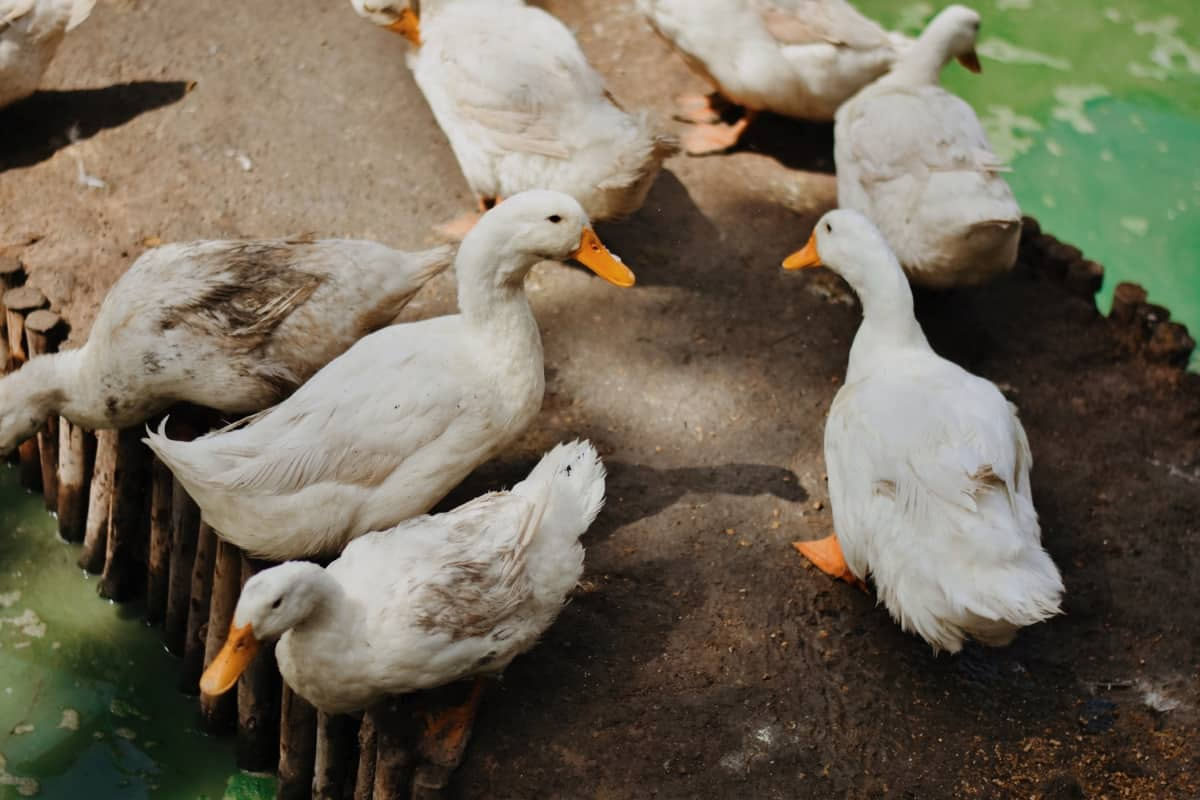
Techniques for Setting Up and Maintaining Polythene Ponds
- Polythene ponds have proven to be a successful alternative to traditional village ponds for rearing ducks. The ponds require minimal water for rearing a flock of ducks, and ducks have been observed to thrive in these ponds.
- Farmers in the Mayurbhanj, Keonjhar, and Sambalpur districts of Odisha have been trained to rear ducks for economic returns, and some of them have adopted the practice of “duck rearing in polythene ponds.”
- The success story of Sri Lokanath Dehury and Sri Basant Kheti inspires many farmers. Despite having no access to ponds, they maintained a flock of Khaki Campbell ducks by digging the soil in their backyard, mulching it with thick polythene, and filling it with water.
- After 20 days of brooding, the ducks were guided to the artificial ponds, and farmers offered them kitchen waste, vegetable peels, leftover food, and other feeding materials throughout the day outside the water.
- The water of the artificial pond was changed every week, and small night shelters were constructed for the flock close to the farmer’s houses.
- The ducks attained body weight of 1.46 kg (female) and 1.66kg (male) by the 5th month of age, and the first egg was found on the 158th and 166th day of the period in flocks of Sri Dehuri and Sri Kheti, respectively.
- The male ducks were disposed of in the local market within ten days of initiation of laying in the flock, and farmers earned a sizable income (@ Rs 200-250/- each).
- Laying ducks were provided with more feed and calcium preparations supplied by the project. From the 6th month onwards, egg production in the flock was more than 60 percent till the completion of one year of age.
- The eggs were sold (@ 5/- each) in the village without any difficulty besides consuming a few. It was recorded that Sri Dehuri and Sri Kheti earned around Rs 11,000/- and Rs 18,000/- respectively within the year, which aids their livelihood.
- Setting up and maintaining polythene ponds require digging the soil, mulching it with thick polythene, and filling it with water. The water must be changed weekly, and night shelters must be constructed for the flock near the farmer’s houses.
- Regular monitoring of the health and growth status of ducks is essential. Farmers need to provide kitchen waste, vegetable peels, leftover food, and other feeding materials to the ducks throughout the day outside the water.
- Laying ducks need to be provided with more feed and calcium preparations supplied by the project. It is observed that ducks thrive in polythene ponds, and it is a successful alternative to traditional village ponds for rearing ducks.
In case you missed it: Duck Farming Business Plan For Beginners
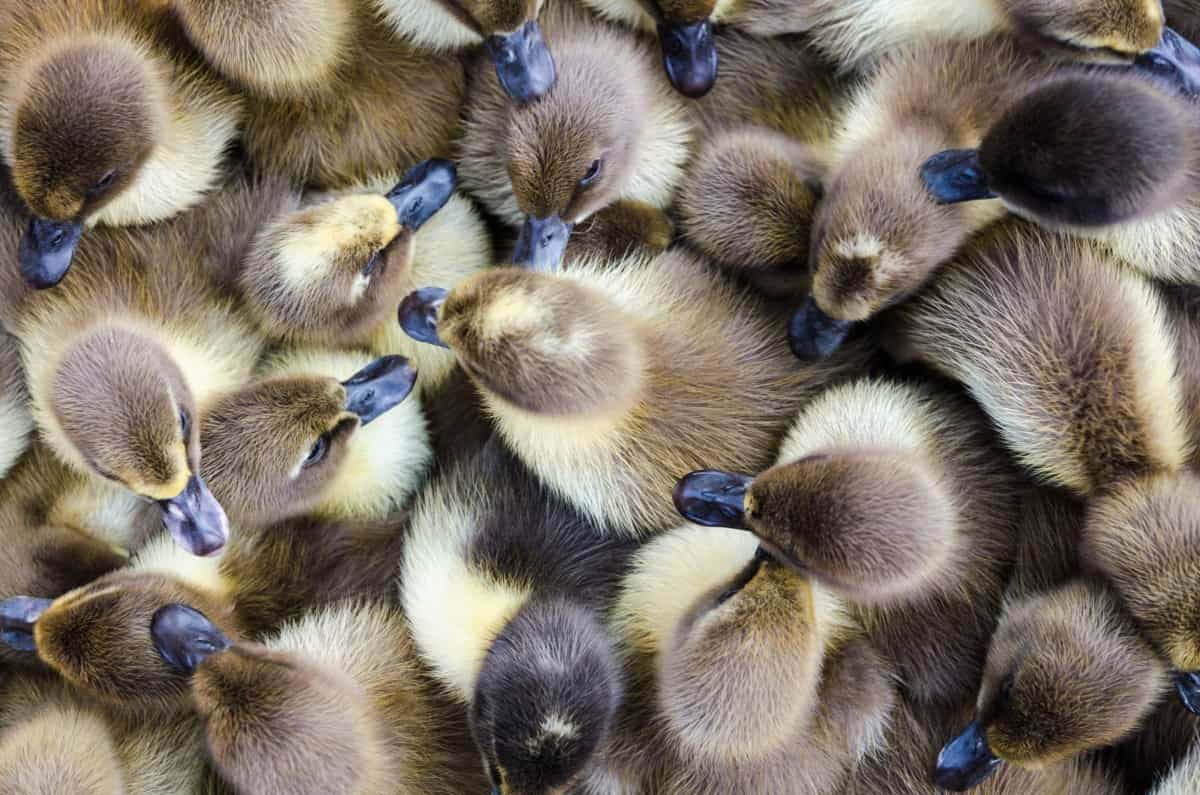
Feed management for Duck Rearing in Polythene Ponds
- Regarding feeding management for duck rearing in polythene ponds, it is important to provide a balanced diet to ensure optimum growth and health.
- At 3-4 weeks, ducklings can be allowed to enter the pond and given leftover food and kitchen waste mixed with water daily, but it should be kept in bowls and not thrown into the pond.
- In addition, a supplement of soaked, half-boiled broken rice and wheat in the ratio of 1:1 at the rate of 50-60gm per bird can be given to the ducks for additional nutrition. There is no need to provide any commercial feed for the birds.
- Adult ducks can graze outside and utilize the pond whenever they want. At the age of 5 months, female ducks start laying eggs.
- During this time, wide-mouth earthen pots are placed inside the duck house, and the birds are let loose in the late morning so that the eggs will be laid inside the house only and not anywhere else.
- Ducklings hatch in 24 days, and from the 10th day onwards, they need to dip their heads inside the water kept in the bowls or pond to clean the eyes.
- It is a natural habit among the birds to prevent blindness. Drakes (male ducks) can be sold for meat between 3 and 4 months of age.
Vaccination for Duck Rearing in Polythene Ponds
Vaccination is an essential part of duck rearing in polythene ponds. The ducks must be vaccinated against two deadly diseases, plague, and cholera, within the first two to three months. Apart from vaccinations, farmers must protect their ducks from predators and snakes. Setting up a duck-rearing unit in a polythene pond requires around Rs. 1,000.
In case you missed it: Sustainable and Eco-friendly Strategies for Tick Control in Dairy Farming

The cost of polythene for each pond, which is around 3 meters, is Rs. 55 per meter, totaling Rs. 155. Additionally, purchasing 25 ducklings at Rs. 15 per day old duckling adds up to Rs. 375. During brooding, the cost of feeding 10 kg of food at Rs. 24 per kg is Rs. 240. Other miscellaneous costs, such as labor and transportation, add up to around Rs. 250 or Rs. 10 per bird. Thus, the total expense for duck rearing in a polythene pond is approximately Rs. 1,020.
Challenges and Solutions for Duck Rearing in Polythene Ponds
- One of the main challenges faced in duck rearing in polythene ponds is the risk of predators, such as snakes, preying on the ducks. Another challenge is disease risk, such as plague and cholera, which can be prevented through timely vaccination.
- Maintaining water purity and cleanliness is crucial to preventing blindness and other health issues in ducks. Solutions to these challenges include taking necessary measures to protect against predators, timely vaccination, and regular cleaning and maintenance of the ponds.
For Backyard Duck Farming, You can watch this Video:
Conclusion
Using polyethylene ponds for duck rearing can revolutionize the way farmers approach duck farming. It offers several benefits, including low investment costs, minimal labor requirements, and a high yield of meat and eggs. With proper care and management, polythene ponds can be an efficient and sustainable way of duck rearing.
- Goat Farming Training Programs in India: A Beginner’s Guide
- Types of Pesticides Used in Agriculture: A Beginner’s Guide
- Economical Aquaculture: A Guide to Low-Budget Fish Farming
- 15 Common Planting Errors That Can Doom Your Fruit Trees
- How to Make Houseplants Bushy: Effective Tips and Ideas
- Innovative Strategies for Boosting Coconut Pollination and Yield
- Pollination Strategies for Maximum Pumpkin Yield
- The Complete Guide to Chicken Fattening: Strategies for Maximum Growth
- Natural Solutions for Tulip Problems: 100% Effective Remedies for Leaf and Bulb-Related Issues
- Revolutionizing Citrus Preservation: Towards a Healthier, Greener Future
- Natural Solutions for Peony Leaf and Flower Problems: 100% Effective Remedies
- Maximizing Profits with Avocado Contract Farming in India: A Comprehensive Guide
- Natural Solutions for Hydrangea Problems: 100% Effective Remedies for Leaf and Flowers
- The Ultimate Guide to Choosing the Perfect Foliage Friend: Bringing Life Indoors
- From Sunlight to Sustainability: 15 Ways to Use Solar Technology in Agriculture
- The Ultimate Guide to Dong Tao Chicken: Exploring from History to Raising
- The Eco-Friendly Makeover: How to Convert Your Unused Swimming Pool into a Fish Pond
- Mastering the Art of Delaware Chicken Farming: Essentials for Healthy Backyard Flocks
- 20 Best Homemade Fertilizers for Money Plant: DIY Recipes and Application Methods
- How to Craft a Comprehensive Free-Range Chicken Farming Business Plan
- Brighten Your Flock: Raising Easter Egger Chickens for Beauty and Bounty
- How to Optimize Your Poultry Egg Farm Business Plan with These Strategies
- Subsidy for Spirulina Cultivation: How Indian Government Schemes Encouraging Spirulina Farmers
- Ultimate Guide to Raising Dominique Chickens: Breeding, Feeding, Egg-Production, and Care
- Mastering the Art of Raising Jersey Giant Chickens: Care, Feeding, and More
- Ultimate Guide to Raising Legbar Chickens: Breeding, Farming Practices, Diet, Egg-Production
- How to Raise Welsummer Chickens: A Comprehensive Guide for Beginners
- How to Protect Indoor Plants in Winter: A Comprehensive Guide
- Ultimate Guide to Grow Bag Gardening: Tips, Tricks, and Planting Ideas for Urban Gardeners
- Guide to Lotus Cultivation: How to Propagate, Plant, Grow, Care, Cost, and Profit
- Agriculture Drone Subsidy Scheme: Government Kisan Subsidy, License, and How to Apply Online
- Ultimate Guide to Raising Araucana Chickens: Breed Profile, Farming Economics, Diet, and Care
- Bringing Hydroponics to Classroom: Importance, Benefits of Learning for School Students
- Ultimate Guide to Raising Polish Chickens: Breed Profile, Farming Economics, Diet, and Care
- Ultimate Guide to Raising Australorp Chickens: Profile, Farming Economics, Egg Production, Diet, and Care
- Silkie Chicken Farming: Raising Practices, Varieties, Egg Production, Diet, and Care